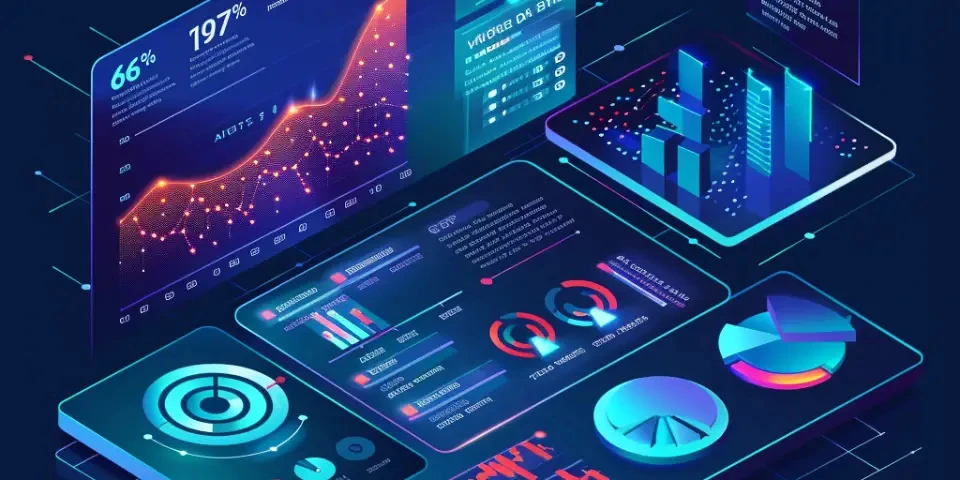The automotive industry has been revolutionized by the integration of Artificial Intelligence (AI) technologies. From self-driving cars to advanced safety features, AI has transformed transportation as we know it. This article explores the various ways in which AI is reshaping the automotive industry, making transportation safer and more efficient.
1. Autonomous Vehicles
One of the most significant advancements in the automotive industry is the development of autonomous vehicles. AI-powered self-driving cars use sensors, cameras, and deep learning algorithms to navigate roads without human intervention. They hold the promise of reducing accidents caused by human error and providing a more efficient and convenient driving experience.

Self-driving cars are equipped with numerous sensors, including LiDAR, radar, and cameras, to detect and interpret their surroundings. The data collected from these sensors is processed in real-time using AI algorithms, allowing the vehicle to make informed decisions such as changing lanes, stopping at traffic lights, and avoiding obstacles.
However, the deployment of autonomous vehicles raises ethical and legal concerns. Public acceptance, regulatory frameworks, and liability issues surrounding accidents involving self-driving cars need to be addressed before they become commonplace.
2. Advanced Driver Assistance Systems (ADAS)
AI has also enabled the development of Advanced Driver Assistance Systems (ADAS), which enhance the safety and performance of traditional automobiles. ADAS uses AI algorithms and sensors to monitor the vehicle's surroundings and provide assistance to the driver.
ADAS includes features such as automatic emergency braking, adaptive cruise control, lane keeping assist, and blind-spot detection. These systems use AI to analyze real-time data from sensors and provide alerts or even take control of the vehicle to prevent accidents.
One popular ADAS feature is Tesla's Autopilot, which combines adaptive cruise control, lane centering, and self-parking capabilities. It is often considered one of the most advanced systems available in non-autonomous vehicles.
3. Predictive Maintenance
AI is transforming the way vehicles are maintained and serviced. Predictive maintenance systems use AI algorithms to analyze data collected from various sensors in the vehicle, such as engine performance, tire pressure, and battery health. By analyzing this data, AI can predict potential failures or maintenance needs, allowing for proactive repairs and minimizing downtime.
This technology enables automotive companies to save costs by reducing the number of unexpected breakdowns and optimizing the maintenance schedule. It also improves safety, as potential vehicle failures can be detected and addressed before they cause accidents.
4. Intelligent Traffic Management
AI can play a crucial role in managing traffic flow and reducing congestion on roads. Intelligent Traffic Management systems utilize AI algorithms to analyze real-time traffic data from various sources, including GPS devices, traffic cameras, and mobile phone data. By processing this data, AI can optimize traffic signal timings, identify congestion points, and suggest alternate routes to drivers.
These systems help to reduce travel times and fuel consumption, leading to a more efficient transportation network. Moreover, they can improve road safety by alerting drivers to hazardous conditions or potential accidents.
5. User Experience Personalization
AI algorithms can be used to personalize the driving experience for vehicle users. By analyzing user preferences, habits, and behavior, AI can adjust various aspects of the vehicle, such as seat position, climate control settings, and infotainment options, to create a customized driving environment.
Companies like Mercedes-Benz have introduced AI-powered voice assistants, such as "Hey Mercedes," which can understand natural language commands and provide drivers with information and assistance. These voice assistants can control various vehicle functions, handle navigation, and even provide entertainment options.
6. Cybersecurity
As vehicles become more connected and reliant on AI, the threat of cyber-attacks increases. AI plays a vital role in ensuring the cybersecurity of automotive systems.
AI algorithms can detect anomalies in the behavior of a vehicle's software, identify potential cyber threats, and take preventive measures to mitigate the risks. Additionally, AI can analyze large volumes of data to identify patterns and trends, helping automotive companies stay one step ahead of cybercriminals.
Continuous research and development in AI cybersecurity measures are crucial to protect modern vehicles from potential attacks.
7. Infrastructure and Smart Cities
AI can also contribute to the development of smart cities and infrastructure. By integrating AI technologies, governments can design transportation systems that are more efficient, sustainable, and interconnected.
AI algorithms can analyze real-time data from various sources, including vehicles, sensors, and traffic cameras, to optimize traffic flow, reduce emissions, and improve energy consumption. This data-driven approach ensures that transportation systems are responsive to changing circumstances and can adapt to the needs of the population.
8. Training and Simulation
AI has transformed training and simulation processes in the automotive industry. AI-powered simulation tools allow engineers and designers to test new vehicle designs and algorithms in virtual environments before physical prototypes are built.
These simulation tools can accurately predict vehicle performance, test different scenarios, and identify potential flaws or limitations. By using AI-based simulations, automotive companies can accelerate the development process, reduce costs, and improve overall vehicle quality.
Frequently Asked Questions:
Q: Can AI completely replace human drivers?
A: While AI-powered autonomous vehicles have made significant progress, they still face technical and regulatory challenges. Full autonomy without human intervention is not yet achievable, but AI continues to enhance driving safety and efficiency.
Q: Are self-driving cars safe?
A: Self-driving cars are designed to prioritize safety and aim to reduce accidents caused by human error. However, more research and testing are required to ensure their safety in various scenarios and conditions.
Q: How does AI help in reducing traffic congestion?
A: AI analyzes real-time traffic data to identify congestion points and suggest alternate routes. It also optimizes traffic signal timings, reducing traffic congestion and improving overall traffic flow.
References:
1. ITU News. "How AI will shape the connected car of tomorrow."
2. Mercedes-Benz. "AI in the Car."
3. ZyberSafe. "Cybersecurity in the Automotive Industry: AI Integration and Threats."






